Characteristics of half-sun-treated coffee beans and cooking techniques of taste and flavor in Minas Tuqiu Manor, Brazil
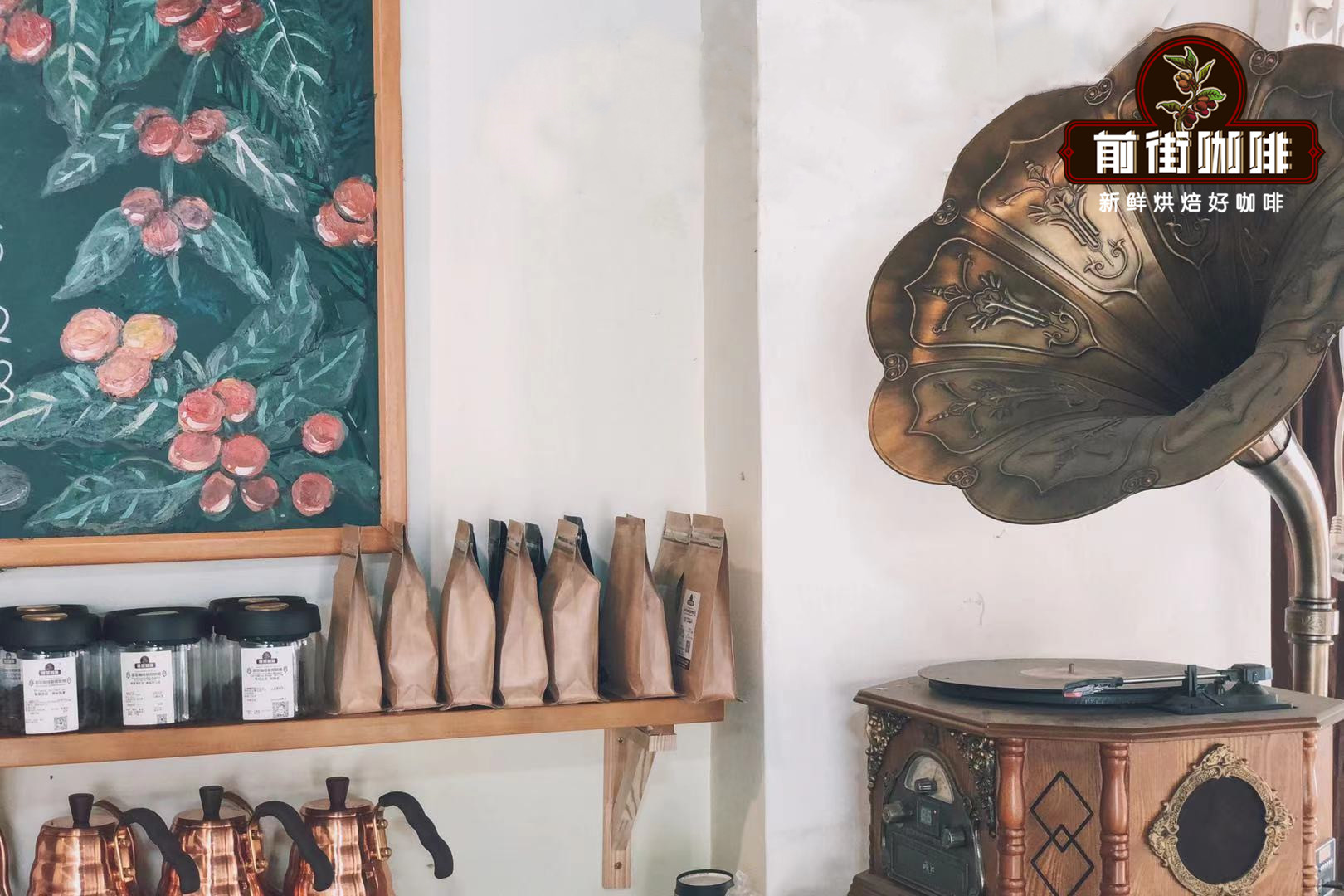
Professional coffee knowledge exchange more coffee bean information please follow the coffee workshop (Wechat official account cafe_style)
Qianjie Coffee is often asked by guests how to choose coffee beans, because Qianjie Coffee shops and Tmall stores currently display more than 30 varieties of coffee beans with different flavors. Since there are so many coffee beans available in Qianjie coffee, it must be difficult occasionally to choose, or if you are used to drinking a certain type of coffee bean and want to change its flavor, then Qianjie coffee will be divided into two directions when recommending coffee beans, sour or mellow, and will be recommended according to the guest's answer. When it comes to nut flavor and chocolate flavor, we do not mention Brazilian coffee. When it comes to Brazilian coffee, we all know that Brazil is the largest coffee producer and the second largest coffee consumer in the world. So where does Brazilian coffee come from? What are the coffee producing areas and famous estates in Brazil? What is Brazil's way of dealing with it? Which varieties are mainly planted and how to grade them?
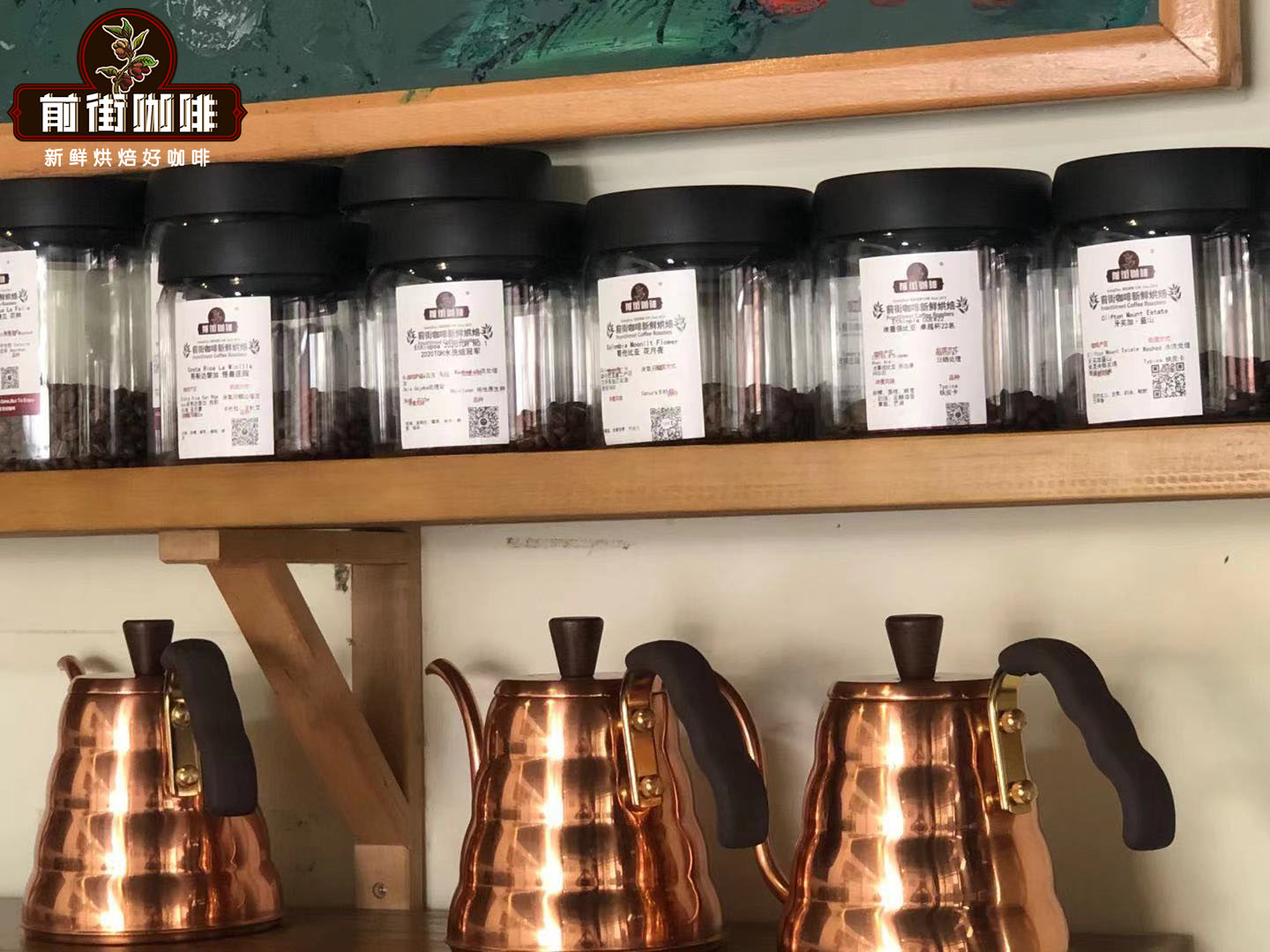
History of Brazilian Coffee
Brazilian coffee was introduced from Guyane française in 1729. It is true that intensive cultivation and changes in treatment methods and technical content of cultivation can improve coffee quality to some extent, but Brazil's natural conditions are in no way comparable to some of the regions that produce the world's best coffee, because although Brazil has better soil conditions and a humid climate, it is not high above sea level.
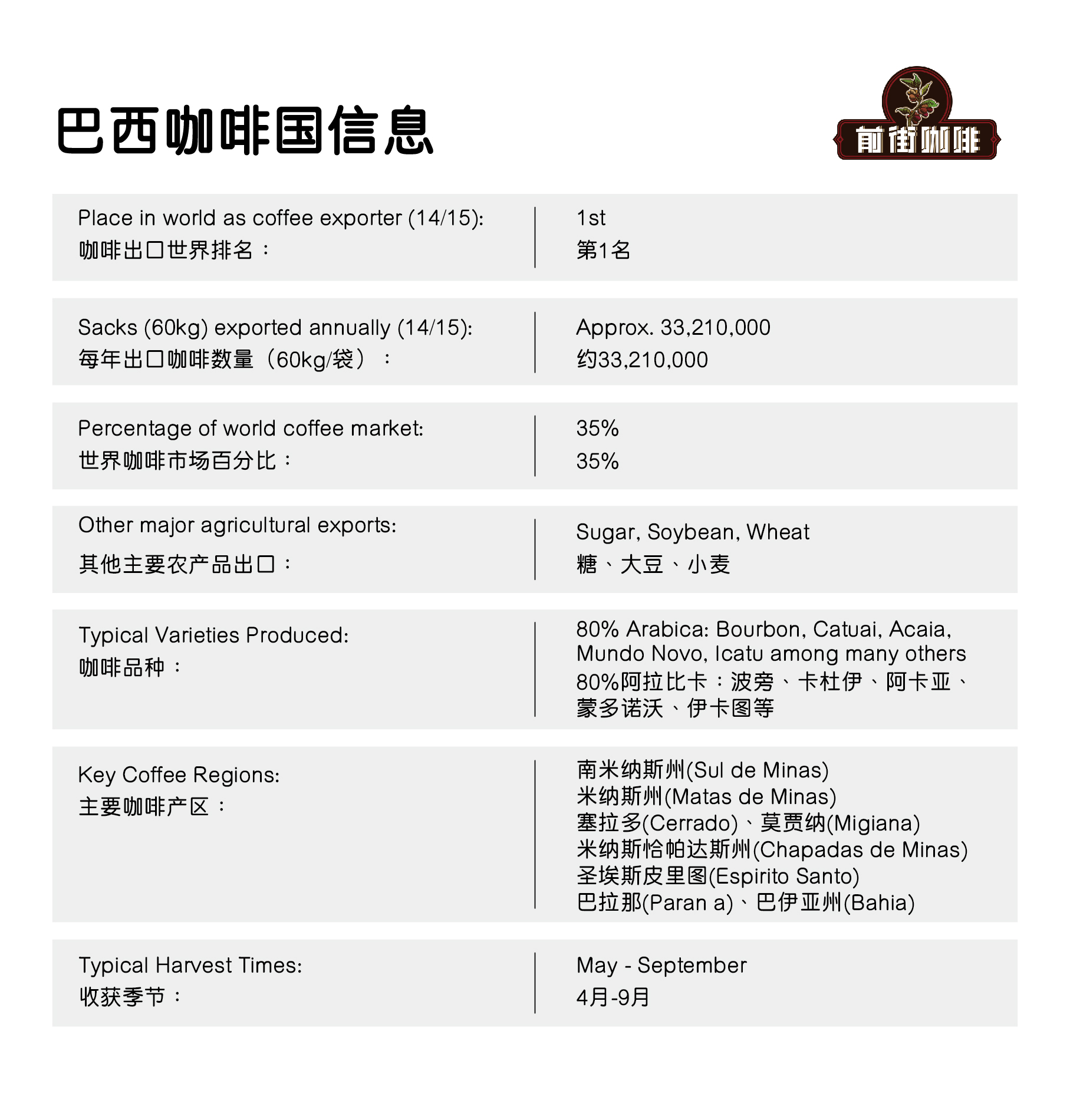
Brazil is the world's largest coffee producer, with the first total output in the world, accounting for about 1% of the world's total output. Brazil is mainly produced in the central and southern provinces. Brazil is suitable for growing coffee, the terrain is relatively flat, coffee gardens are mostly less than 1200 meters above sea level, and there is no shade from big trees, so it is not fine coffee because the raw and ripe berries are harvested at the same time. The quality of Brazilian coffee is average but less excellent, its bean quality is soft, and it is obviously not resistant to heat in the roasting process. Among the varieties, Santos is more famous, which is named after its export port Santos. Brazilian coffee beans are neutral and can be tasted alone (though a bit monotonous), or mixed with other kinds of coffee beans to form a comprehensive coffee, which is generally considered to be indispensable in blending.
Geographical conditions
Brazilian coffee is widely grown in flat areas. In order to adapt measures to local conditions, Brazilian landlords have developed improved Arabica coffee trees that do not require highland or shade decades ago, which can be planted on plains or grasslands and directly exposed to the sun, which is different from the traditional higher altitude shade cultivation.
Most of the Brazilian coffee gardens are only a few hundred meters above sea level, even on flat land. This kind of exposure planting method makes the coffee fruit grow faster, the flavor development is not complete, and the density of beans, that is, the so-called hardness is not as good as plateau beans, the acidity of the fruit is obviously low, the flavor is monotonous, and the coastal Rio coffee even has iodine and salty taste. This flavor is thought to be the result of some kind of microbial action, but even if it is planted in the same soil, it does not necessarily produce this flavor every year. Most coffee hobbies do not appreciate this flavor. Only a few Middle Eastern countries have the habit of sugar and brewing coffee, which is particularly suitable for the flavor of Rio coffee.
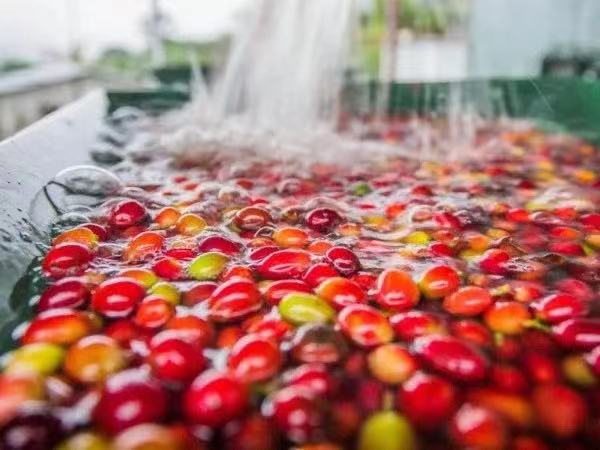
Brazilian coffee treatment
Brazilian coffee has sun, half-sun and water washing methods at the same time, and the judgment method is mainly based on the dry and humidity conditions of the farms of each producing area, thus showing the best flavor of each producing area, which is very diverse!
But why do most people still think that Brazil is dominated by solarization?
The main reason is that before 1990, rough solarization was adopted almost all over Brazil, which made the raw beans of Brazilian coffee easy to have the taste of soil and wood, which made the raw beans of Brazil poor in quality and tarnished the image.
However, after 1990, Brazil developed half-sun method, which not only shortens working time, increases fruit aroma and sweetness, but also reduces the chance of coffee beans getting peculiar smell, and improves its quality a lot, so it is very suitable for brewing coffee as a single product.
Brazilian mound can make coffee in half the sun.
Origin: Brazil
Producing area: Carmo De Minas town, Minas Gerais
Farm: mound can
Variety of coffee: bourbon
Altitude: 1140 m
Raw bean treatment: half-sun
Coffee flavor: sweet with drupes, lime peel, and cooking chocolate.
Dry aroma: red wine, nuts, sweetness, spices, slightly floral aromas, sweet peppers
Wet incense: sandalwood, red wine, mango, passion fruit, wheat, nuts, fairy dregs
Sipping: elegant Passion Fruit Juice, sticky grease, sweet pepper, pepper, hot aftertaste with sweet fruit, spice stimulation, smoke aroma, coffee slightly cool oil obvious and sweet aftertaste with ripe fruit sour aroma
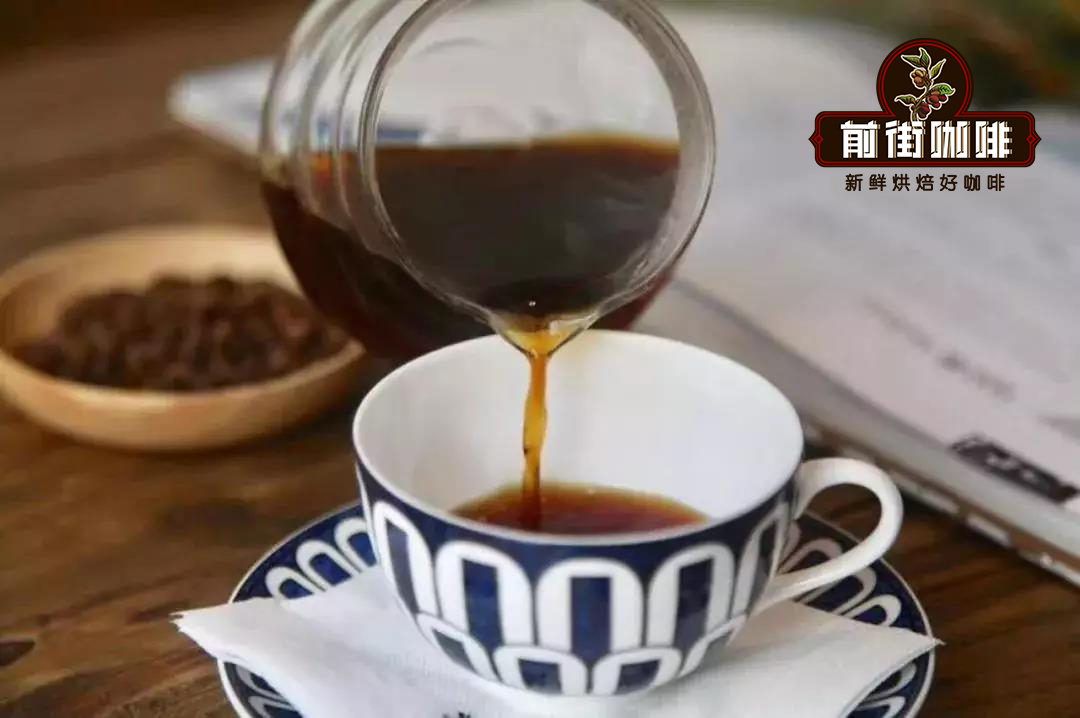
The flavor of half-sun treatment of beans in Minas Tuqiu Manor, Brazil?
Tijuco Preto Manor, located 1140 meters above sea level south of Minas, is the seventh excellent manor in the 2005 coffee competition. It is a traditional bourbon coffee tree species. Instead of picking mature coffee beans by machine, it uses hand-picked coffee beans to avoid different maturity. Coffee beans with shells (thin film) are dried in the sun in a half-sun drying farm until the water content is reduced to less than 11%. Compared with other Brazilian beans, the structure is stronger. The wide elasticity of the baking area makes the coffee flavor more layered, and the aroma of fruit will be better than that of cocoa chocolate, because without the disadvantage of the softer and less heat-resistant soil of Brazilian beans, the Tijuco Preto manor does not have a bitter and uncomfortable thorn in the throat, but still maintains a warm, sweet taste.
The boutique coffee competition in Brazil has been held for seven years since 1999. This world coffee competition is called Brazil Cup of Excellence ®Competition. This coffee competition, which began in Brazil, has a far-reaching impact on the boutique coffee industry. Central American countries have held national coffee competitions, and even South America and Ethiopia in Africa have followed this trend, joining the coffee competition and the model of online open bidding. She brings the opportunity for direct dialogue between producers and bean merchants, and through cup evaluation and comparison, work together to make more far-reaching contributions to boutique coffee, such as the research of varieties, production improvement, the impact of various treatments on taste and quality, and so on.
For example, in the 2005 Brazilian National COE Competition, many award-winning estates have a delicate half-sun treatment model, and even dare to introduce varieties with lower yield but better quality.
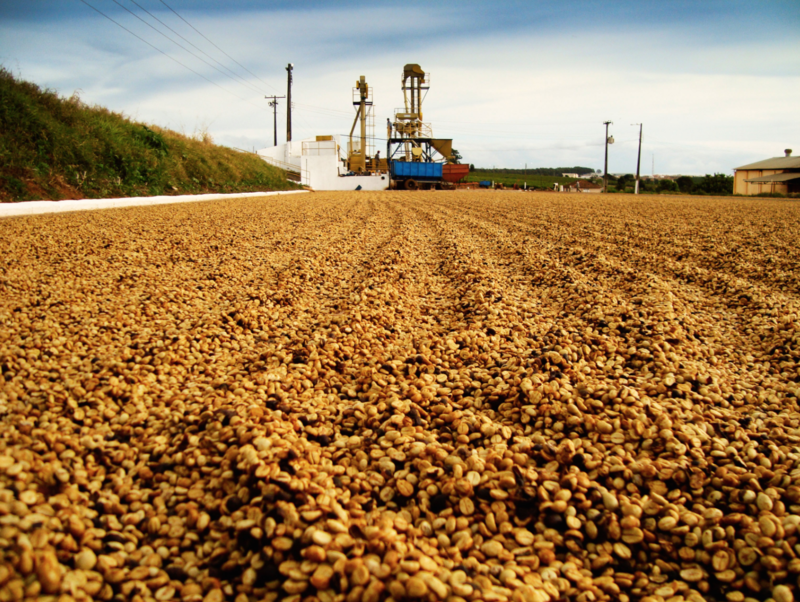
Although Tu Qiu Ke Manor is high above sea level, the terrain of the coffee planting area of the manor is quite relaxed, and the surrounding scenery is beautiful. The estate also has primitive forests, mountain springs, waterfalls, the protection of the environment, wildlife protection, very careful, 346 hectares of dependent land, only 70 hectares to grow coffee, and in order to find a better flavor and try to meet the needs of customers for boutique Brazil, the manor planted a wide variety of varieties, including: MUNDO NOVO, ACAI Á, CATUA, ICATU and YELLOW BOURBON (the famous yellow wave side species). Here are Fazenda Tijuco Preto's lovely raw bean bags and her famous half-sun-treated raw beans:
Fazenda Tijuco Preto's harvesting and processing system is quite painstaking, and the model they have developed is called the PWP half-sun process (the so-called PWP: picked, washed, pulped), because many Brazilian manors are harvested by machine, with the Central American boutique manor picking by hand, which is rare in Brazil, and on the day of harvest, soak and wash and then immediately remove the skin and meat, and then go up the scaffolding to prepare the natural sun. This trilogy is called the PWP method at TIJUCO PRETO Manor.
The treated raw beans with shells were exposed to the balcony from the next day, turning an average of 20 times a day until the water content dropped to 11%. After that, it will be put into storage for 60 days.
When these shell beans are ready for export, four [dry] steps of shelling, picking, grading and packaging are carried out to examine the raw beans of Osher, and it can be found that they are indeed typical half-sun Brazilian boutiques. The award-winning qualifications of this manor include:
The coffee growers' cooperative representing COCARIVE (Cooperativa dos Cafeicultores de Carmo de Minas), the Carmo de Minas district, won the silver medal of the Solar Arabica Coffee Group held by IVPA, France. And the seventh place in the 2005 Brazilian National Competition! 7th Winning farm of 2005 Brazil Cup of Excellence ®Competition
Brazilian half-sun treatment (honey treatment)
Half-sun exposure is an improved method of solarization. The main difference between half-sun and solarization is that the exocarp and pulp are removed before the sun, and the skin and pulp are directly exposed to the sun under the retained pectin layer. The famous method of honey treatment in Costa Rica can also be regarded as half-sun.
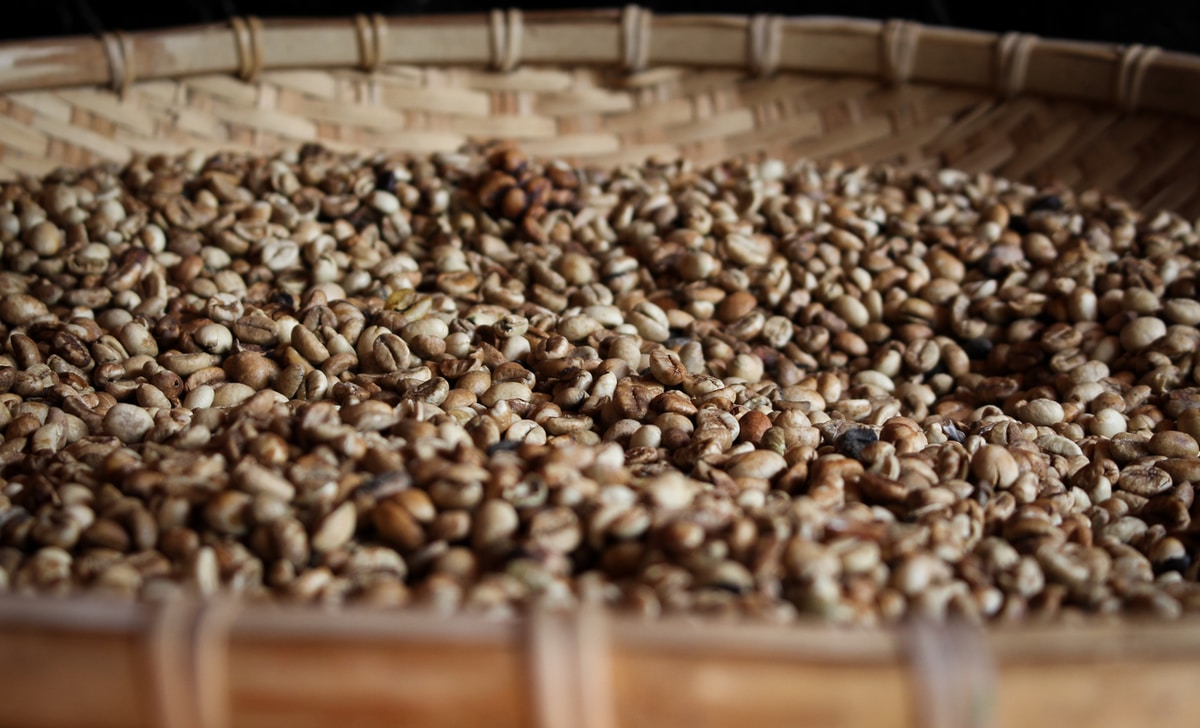
Processing steps
1. Remove floating beans (same sun method)
Pour the coffee beans into a large tank, the underdeveloped inferior beans will surface, and the ripe and full fruits will sink to the bottom of the water. At this time, the floating beans on the surface will be removed, that is, the steps of removing floating beans will be completed.
two。 Remove peel and pulp (same washing method)
Through the pulp screening machine (pulping machine), the exocarp and pulp of coffee fruit are removed. It leaves pectin, endocarp and silver peel.
3. Insolation
The coffee beans with pectin are directly exposed in the exposure field, so that the water content is reduced to 10-14%.
4. Remove pectin and endocarp
With a special machine, remove pectin and endocarp, that is, complete the treatment steps.
Advantages
1. It belongs to the improved method of tanning, because the pulp is removed from the beginning, so there is no mildew problem.
two。 It does not need to consume a lot of water, and the cost is low.
Shortcoming
The processing steps can be said to be the most complicated and labor-intensive of all the ways.
Flavor
Honey-treated coffee beans have a better flavor, sour taste and sweet taste balance, and the same sun method because of the sun, the aroma of coffee beans will also be magnified, mellow flavor.

Coffee varieties grown in Brazil
Brazil grows a wide variety of coffee, from Arabica to Robusta. Supple, low acid, slightly sweet and balanced are the main characteristics of Arabica coffee in Brazil. Although Brazilian coffee is generally considered to have no outstanding flavor characteristics, Brazilian coffee beans are the most suitable choice for mixed coffee. Brazilian coffee is a good foil to produce an elegant and inexpensive blend of coffee. The use of Brazilian coffee can balance other coffee varieties with strong flavor, such as Mamba Coffee and Goba Coffee. Brazilian coffee is the best choice, and Brazil is also one of the most widely used espresso recipes.
At present, Brazil takes Red Bourbon, Yellow Bourbon, New World and Kaduai as the main varieties. Kaddura, Akaia, Obata, Alamosa, pointed body bourbon and so on have also been planted and studied. Cambinas Agricultural Research Institute in Sao Paulo is a famous coffee variety improvement arsenal in Brazil. Katim, the most widely cultivated in the world, is the masterpiece of Portuguese and Brazilian scientists.
Graded coffee producing areas in Brazil
Extremely meek (Strictly Soft): South Minas, Hirado, Mojiana, Bashiya turquoise plateau.
Supple (Soft): Bashiya, Minas southeast mountain forest, Parana, west-central S ã o Paulo, the hills of Espiritusando.
Slightly meek (Softtish): East and northeast of Minas.
Not easy (Hardish): Parana low Haida, Espiri Tusando.
Iodine choking (Rioy): Espiritusando flat, lower southeast of Minas.
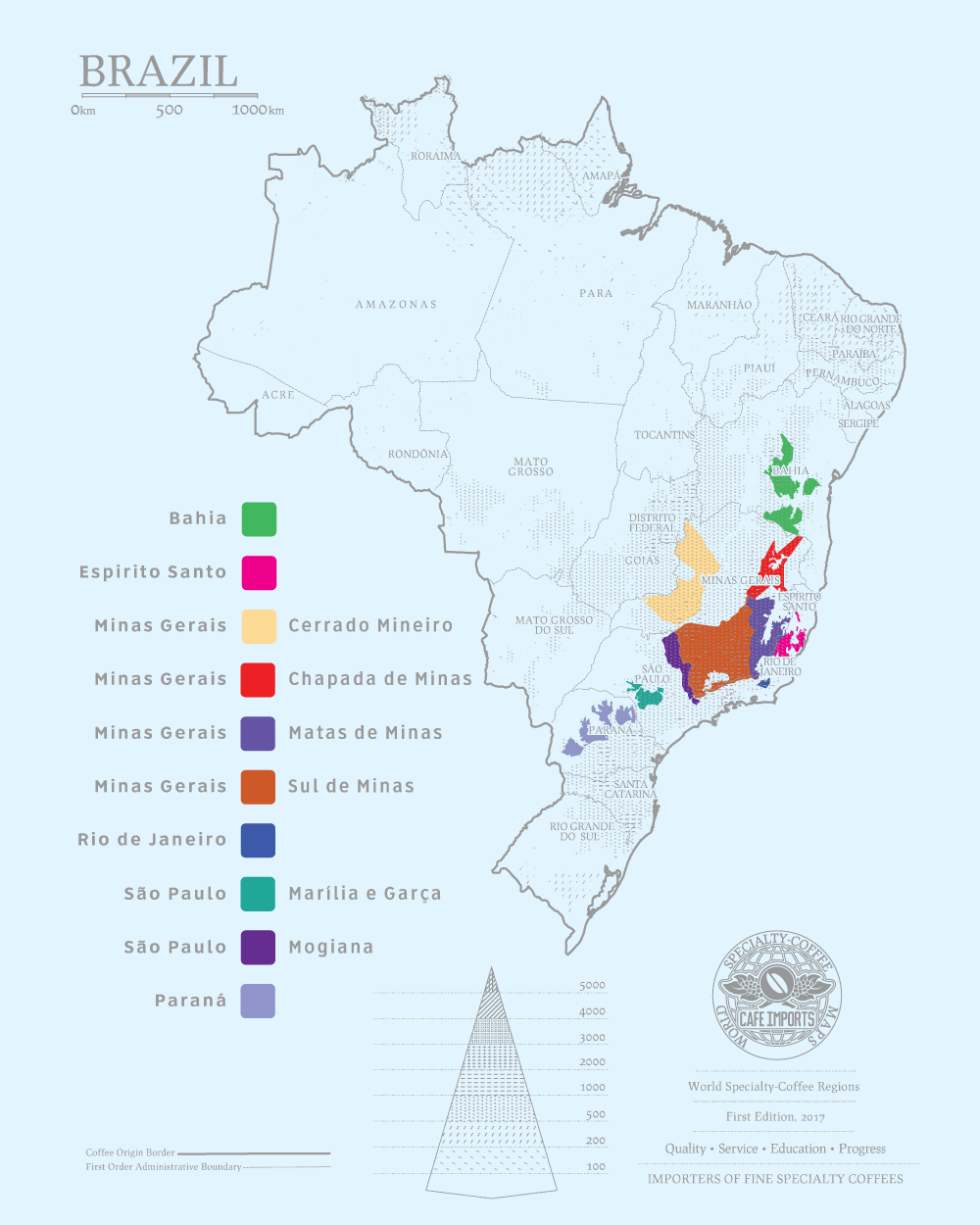
coffee producing areas
Brazil's main producing areas are Minas Gerais, Sao Paulo, Bahia and Espirito Santo, which account for 90% of the country's exports. Our common Santos and Mogiana Mogiana come from Sao Paulo, Cerrado and Sul de Minas in Minas Gerais because of their high altitude and prolific production of fine Brazilian coffee beans. Cerrado is located in the west of Minas Gerais and is a flat plateau. Altitude 750m--1200m.
Minas del Sur is a hilly forest area with an altitude of 700m-1200m. It is the earliest production area of Brazilian coffee. Due to the increase of labor costs, most of them are now harvested mechanically. It is also the earliest commercial area of coffee. We can see many large exporters here. Bahia, located in the north of Brazil, mainly produces washed Brazil. Santo Espiritu, near the sea, is the main export area of Brazilian Robusta varieties.
Sao Paulo State
Mogiana/ Mogiana
This area is very close to Minas South. Coffee is grown among shrubs, grass and other vegetation. There are many farming families in this area, some of which operate as traditional large-scale farms, while others operate on a small, modern scale. Modern technology blends mountain coffee culture to produce the highest quality green coffee beans.
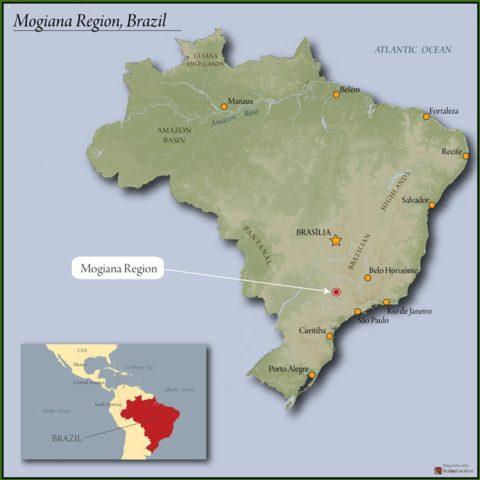
Qianjie Coffee Queen Manor of Brazil
Producing area: Morgiana
Name of the manor: Queen's Manor (Fazenda Rainha)
Owner: Regina Helena Mello de Carvalho Dias belongs to the Carvalho Dias family.
Variety: Huang bourbon, Yellow Bourbon
Treatment method: sun treatment
Altitude: 1400-1950m
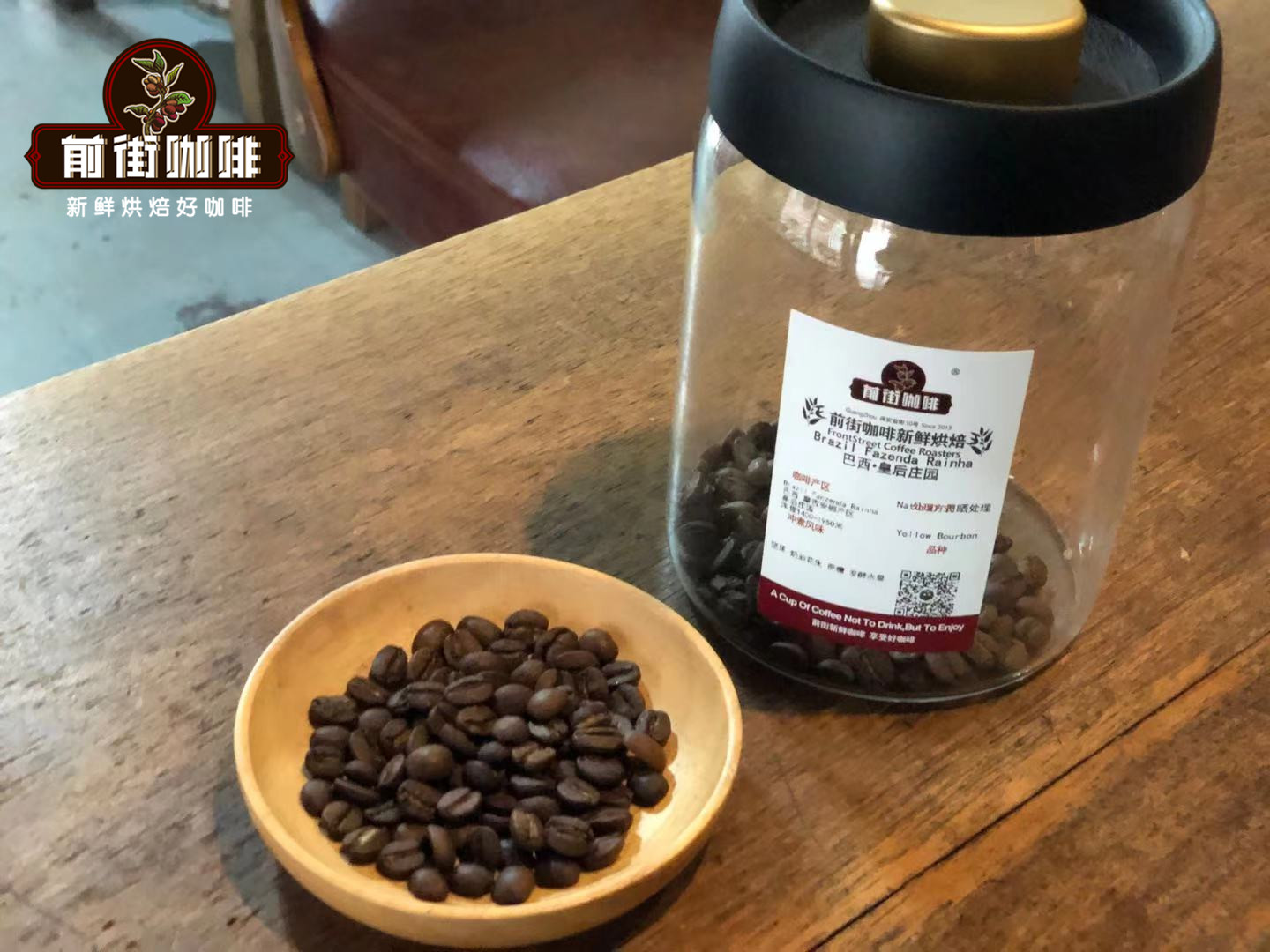
Baking analysis
The quality of raw bean is solid, the flavor is good, with a slight aroma of orange peel and spice, and the moisture content of raw bean is 9.9%.
The water content of the beans is relatively low, which makes the beans have a strong ability to absorb heat, so the Qianjie coffee roasting plan is to put 200 degrees into the beans, then a big fire and a small throttle to speed up dehydration, and when the dehydration stage is over, open the stroke door and medium heat to let Maillard react. Time is not too fast, close to a burst tail out of the oven.
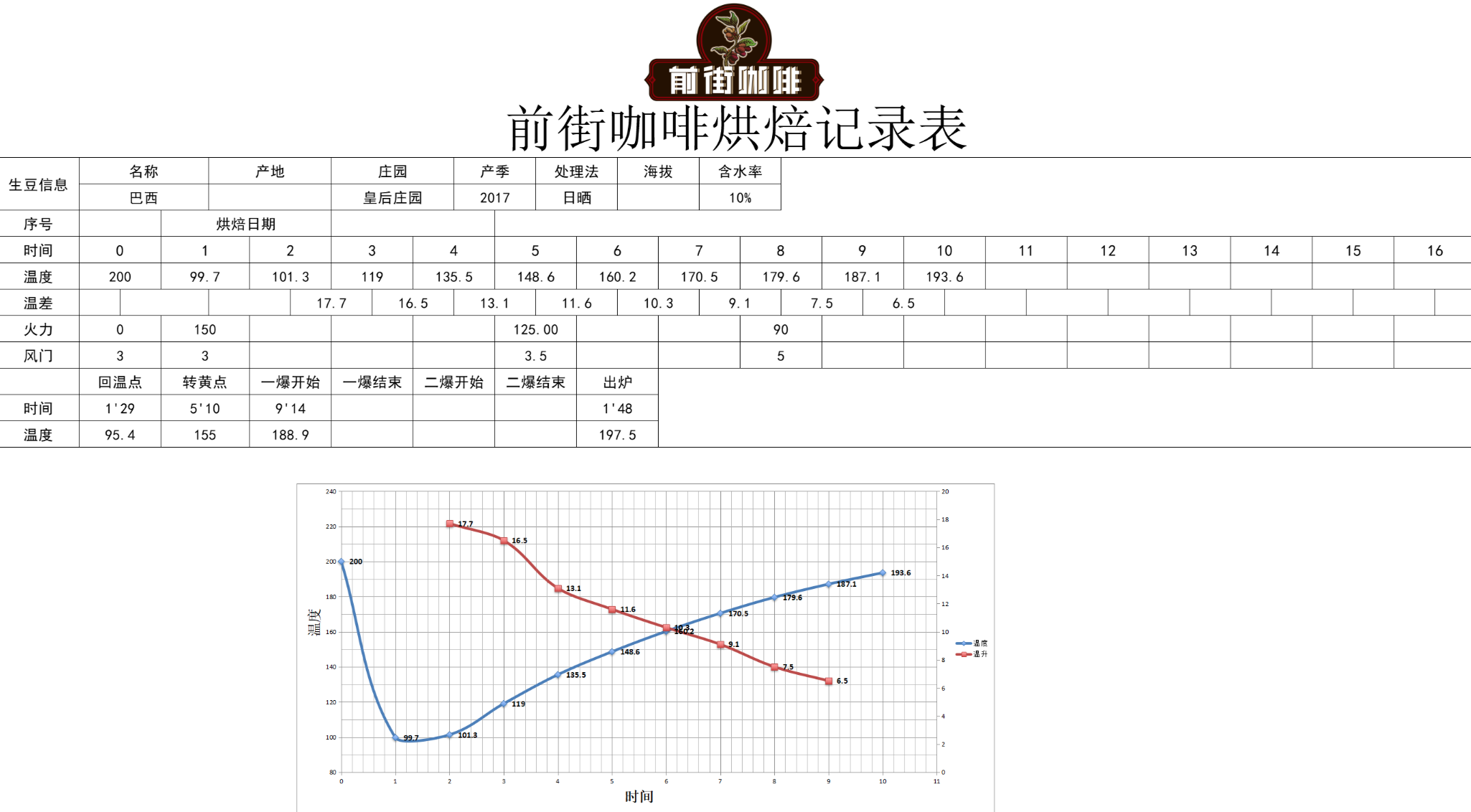
Qianjie coffee was baked 4 times before and after, and the final choice was between 1: 45-2 after the end of the explosion. Taste with obvious sweetness, but not so boring sweet, the background with a hint of lemon aroma, this aroma is more prominent in the wet fragrance stage, the latter part of the performance has an obvious taste of dark chocolate, the overall feeling is more round, while reflecting the overall characteristics of Brazil, without losing liveliness.
Cooking parameters
Filter cup: Hario V60
Water temperature: 88-90 ℃
Powder / water ratio: 1:15
Degree of grinding: moderate grinding
Washing and cooking technique
The first stage water injection is steamed with 30 grams of water, the steaming time is about 30 seconds, the second stage water injection is divided to 125 grams of water, when the water level is about to expose the powder bed, continue the third stage water injection to the end of 225 grams, the filter cup is removed when the water level is about to expose the powder bed, and the extraction time is 2: 00 ".
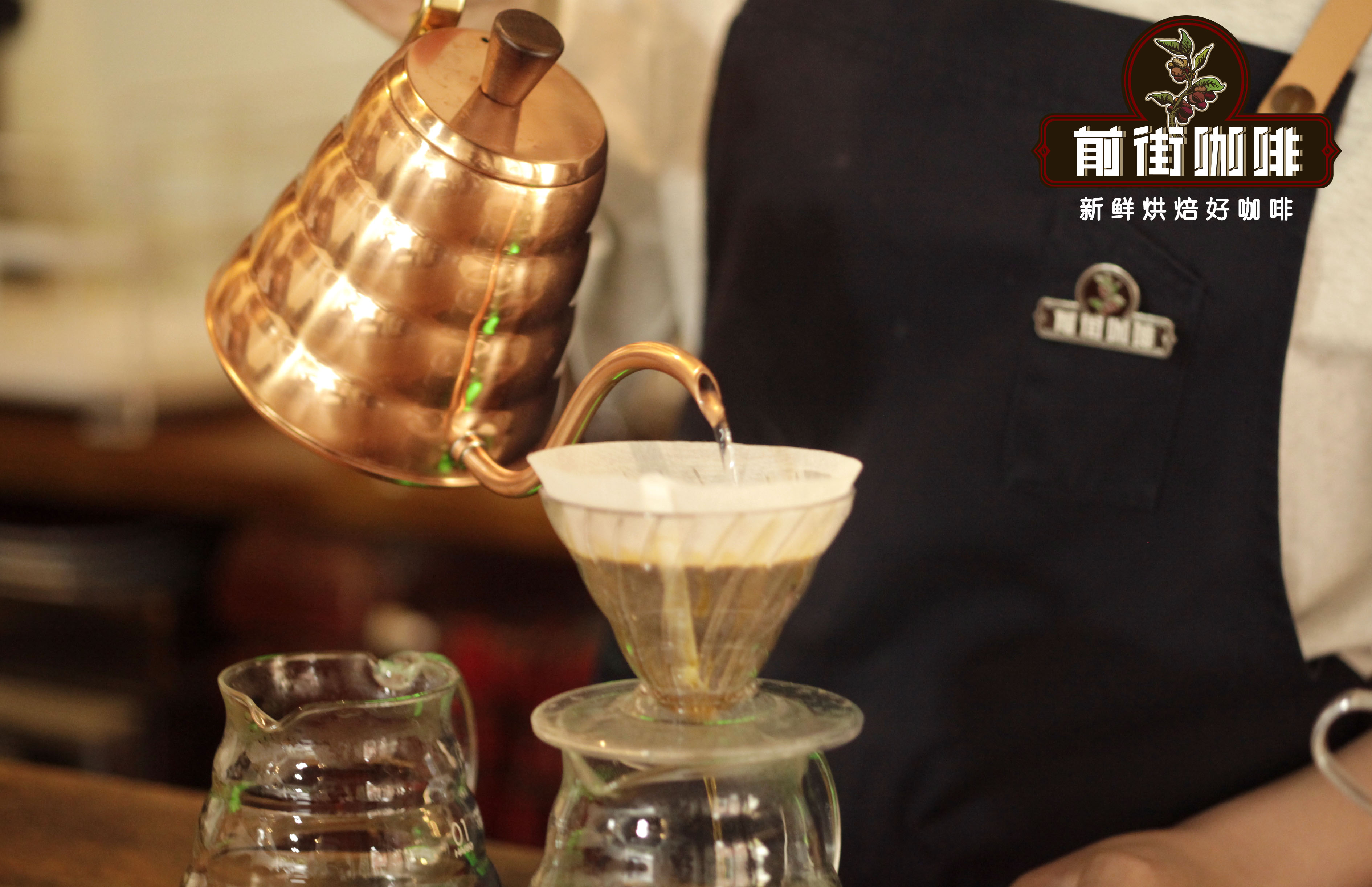
Flavor description
The sweet and clean beans and the use of half-sun will brighten her acidity but match the sweetness, and some of them even have tropical fruit aromas, especially the overflowing aroma when cooking. Sugar cane juice's sweet, black tea, beautiful and smooth fruit sweetness, obvious nutty flavor, balanced and supple acidity, weak and clean bitterness, rich chocolate aroma and nutty flavor, bright and refreshing taste, smooth and delicate taste.
Midwest / Gar ç a Marilia and Piraju
Coffee bean cultivation in the region is generally a way of combining large estates with traditional production lines. Although production seems to be declining, it is more pursuing the production of higher quality raw beans.
Parana State / Norte Pionerio do Paran á
The state, which used to be Brazil's largest production region, now has its own unique production technology.
After discovering a decline in the unit yield of coffee woodland, producers in Parana created a new "closed planting system". At present, a large number of coffee trees, seedlings per hectare can better withstand the cold wind, but also ensure a more regular yield.
Bahia State / Bahia
Bahia / Atlantico Baiano: Robusta beans are mainly produced on large farms.
Shapada / Planaltoda Bahia: this area is located in the central state of Bahia and mainly produces hand-screened Arabica coffee. It mainly adopts the method of washing.
Bahia Hilado / Cerrado da Bahia: this area is located in the western state of Bahia and is generally considered to be the latest coffee growing area in Brazil. Modern technologies for irrigation and harvesting are widely used in this area.
Espirito Santo
The state is divided into two main regions, the north, where both large and small plantations grow Robusta beans, and the south, where typical mountain coffee is grown, generally in smaller quantities. This area has both washing and sun exposure.
Minas Gerais
Minas del Sur/ Sul de Minas
The small estate area produces about 8 - 10 million bags of coffee beans grown along the mountain. Suitable altitude, undulating terrain and favourable climate for coffee cultivation, concentrated rainfall in the months when fruit is needed and dry weather in the months when harvest is needed.
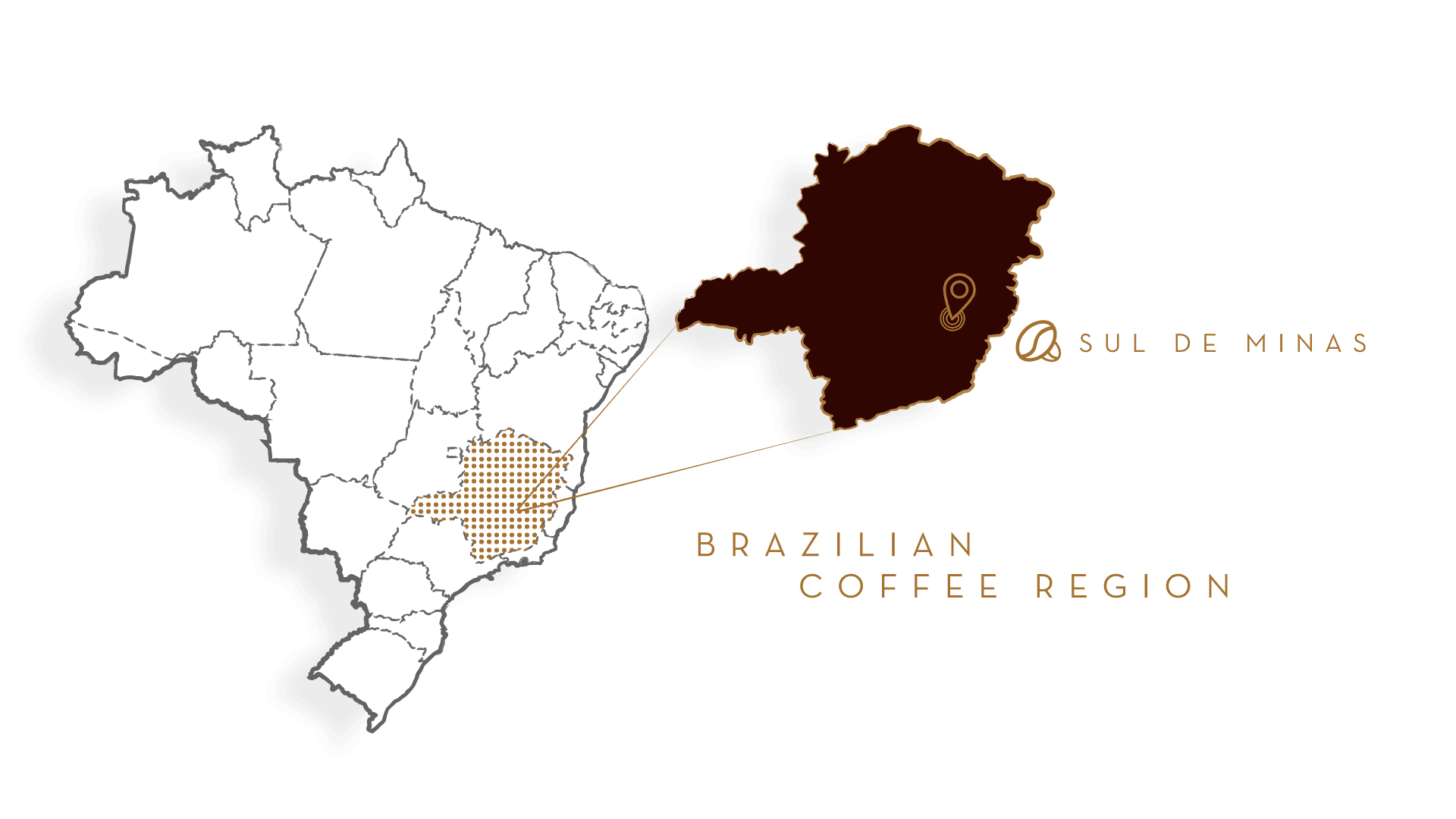
Front Street Coffee Brazil Red Bourbon
Production area: Minas del Sur
Breed: Red Bourbon, Red Bourbon
Treatment: semi-solarization
Altitude: 1000m
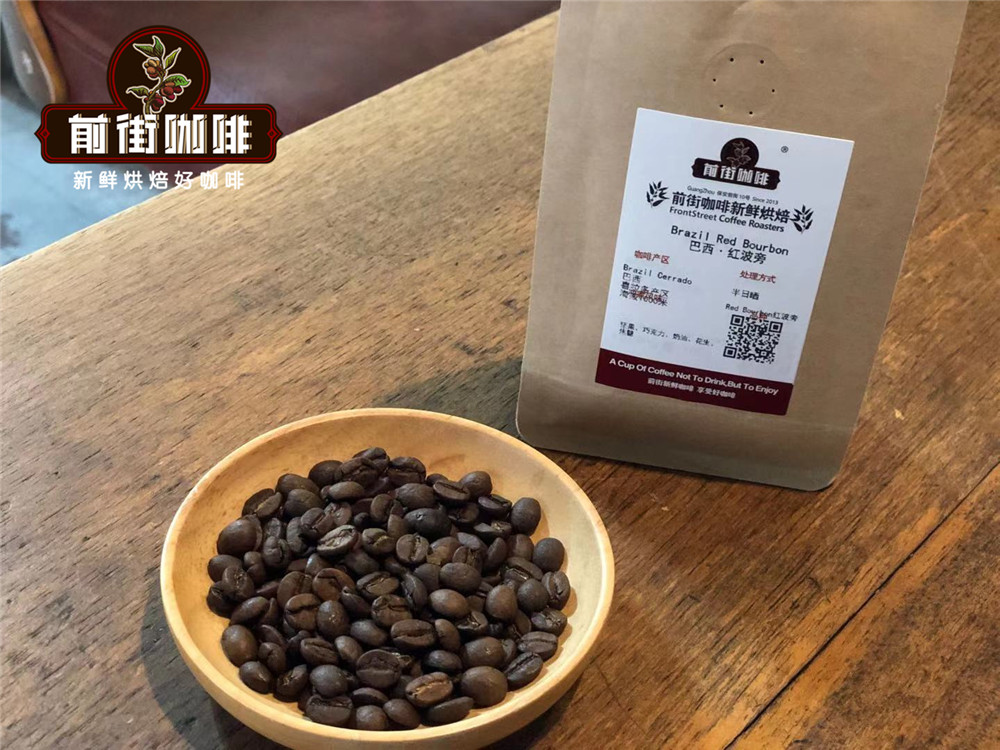
brew parameters
Filter cup: KONO
Water temperature: 88-90℃
Powder water ratio: 1:15
Degree of grinding: moderate grinding
The coffee beans are roasted to a deeper degree to highlight the mellowness of the coffee. Front Street Coffee will choose Kono filter cups to brew. Kono filter cup is characterized by its soaking function, which can be used to extract more coffee substances and enhance the mellow taste. Because its ribs are not many and located at the low end, it can make the filter paper close to the filter cup to achieve the effect of limiting the air flow, thus slowing down the water flow speed and increasing the contact time of water powder.
Brewing technique
The first stage of water injection is stewed with 30g water for about 30 seconds. The second stage of water injection is divided into stages when the water level drops to 125g water. When the water level drops to 225g, the third stage of water injection is continued. When the water level drops to 225g water, the filter cup is removed. The extraction time is 2 '00 ".
Flavor description
The overall flavor has nutty, chocolate, cream, peanut, caramel, fruit acid, sucrose flavor.
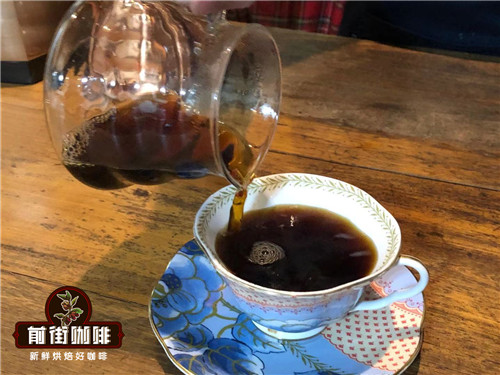
Syrador / CerradoMineiro
Growing coffee in Hirado (also known as Savannah) is a victory for Brazilian coffee technology. More and more large coffee plantations in Syracuse use high technology for production, and this is the case in very few areas. Plateau climate, four distinct seasons, fruit ripening is very stable, in the harvest season is not at all. Savannah coffee is generally treated in the sun, which is also a trend in current processing.
Minas Shapada / Chapada de Minas
In the northern part of Minas Gerais, the area is very small, but the quality of raw beans is among the best in the world.
Mount Minas Gerais / Matas de Minas
It is a very large area with a very diverse ecosystem and is the oldest coffee growing area in Brazil, and its highest altitude is the best area for coffee processing.
Rond ô nia, Londonia
Located in the Amazon forest region of western Brazil, adjacent to Bolivia, this area mainly produces robusta coffee.
Rio deJaneiro, State of Rio de Janeiro
Mainly grow Arabica species. Compared with other producing areas, it has excellent port traffic advantages.
For more boutique coffee beans, please add private Qianjie coffee on Wechat. WeChat account: kaixinguoguo0925
Important Notice :
前街咖啡 FrontStreet Coffee has moved to new addredd:
FrontStreet Coffee Address: 315,Donghua East Road,GuangZhou
Tel:020 38364473
- Prev
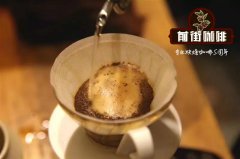
Half-sun treated coffee beans from Minas Gerais Cherry Wood Farm (Jatoba) in Brazil have a special taste.
Professional coffee knowledge exchange more coffee bean information please follow Coffee Workshop (Wechat official account cafe_style) country: Brazil: Minas Gerais region: So Joo do Manhuacu Farm: Cherry Wood Farmer
- Next

Characteristics, taste, flavor and cooking techniques of coffee beans in Yalding Manor in Minas, Brazil
Professional coffee knowledge exchange more coffee bean information please follow the coffee workshop (Wechat official account cafe_style) Brazilian coffee beans from BOM JARDIM Bonyardin Manor, growing in the Brazilian plateau at 1300m above sea level. In order to make his coffee beans taste better, farmer Vicente Faria specially selected different kinds of plants to make the windbreak forest of the manor.
Related
- Detailed explanation of Jadeite planting Land in Panamanian Jadeite Manor introduction to the grading system of Jadeite competitive bidding, Red bid, Green bid and Rose Summer
- Story of Coffee planting in Brenka region of Costa Rica Stonehenge Manor anaerobic heavy honey treatment of flavor mouth
- What's on the barrel of Blue Mountain Coffee beans?
- Can American coffee also pull flowers? How to use hot American style to pull out a good-looking pattern?
- Can you make a cold extract with coffee beans? What is the right proportion for cold-extracted coffee formula?
- Indonesian PWN Gold Mandrine Coffee Origin Features Flavor How to Chong? Mandolin coffee is American.
- A brief introduction to the flavor characteristics of Brazilian yellow bourbon coffee beans
- What is the effect of different water quality on the flavor of cold-extracted coffee? What kind of water is best for brewing coffee?
- Why do you think of Rose Summer whenever you mention Panamanian coffee?
- Introduction to the characteristics of authentic blue mountain coffee bean producing areas? What is the CIB Coffee Authority in Jamaica?

